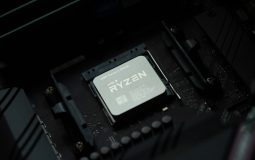In the fast-evolving digital landscape, choosing the right content management system (CMS) is more critical than ever. With user expectations growing and technology changing rapidly, businesses must evaluate how their CMS supports (or hinders) their goals. In 2025, the debate between headless CMS and traditional CMS is more relevant than ever. This article aims to break down the differences, benefits, drawbacks, and help you determine when it might be time to make the switch.
What Is a Traditional CMS?
A traditional CMS, such as WordPress, Joomla, or Drupal, is a monolithic system where the frontend (what users see) and backend (where content is created and managed) are tightly coupled. It’s like a one-stop shop: you manage your content and presentation all in the same platform.
Advantages of traditional CMS include:
- Easy to Use: Friendly admin interfaces allow content editors to manage websites with minimal technical knowledge.
- Integrated Themes and Plugins: Plug-and-play design templates and extensions simplify customization.
- All-in-One Architecture: Having both frontend and backend together is convenient for small and mid-sized projects.
What Is a Headless CMS?
A headless CMS is a backend-only CMS that stores and delivers content via an API. “Headless” implies that it doesn’t dictate how or where the content is displayed—the frontend or “head” is managed separately using technologies like React, Vue.js, or mobile frameworks.
Benefits of headless CMS include:
- Omnichannel Delivery: Content can be pushed to multiple platforms—websites, mobile apps, digital kiosks, IoT devices, and more.
- Developer Flexibility: Developers can use their preferred frontend frameworks and tools.
- Improved Performance: With decoupled architecture, websites often benefit from faster load times and more optimized experiences.
 headless cms, api architecture, frontend backend</ai-img]
headless cms, api architecture, frontend backend</ai-img]
Key Differences Between Headless and Traditional CMS
To better understand the distinction between these systems, here’s a side-by-side comparison:
| Feature | Traditional CMS | Headless CMS |
|---|---|---|
| Frontend Management | Built-in and tightly coupled with backend | Separate from backend; developer-defined |
| Content Delivery | Primarily web-based | APIs allow delivery across platforms |
| Development Flexibility | Limited to available templates/plugins | Full flexibility with modern frontend technologies |
| Performance | Dependant on server load and CMS optimization | Often faster due to content fetched via APIs |
| Learning Curve | Easy for non-tech users, low dev knowledge required | Steep for non-developers, ideal for tech teams |
When Should You Stick with a Traditional CMS?
Despite all the buzz around headless CMS, traditional systems still serve a purpose, especially for smaller businesses and content-driven websites. Consider staying with a traditional CMS if:
- You have a small website with basic pages and a blog.
- Your team lacks dedicated developers to handle a decoupled architecture.
- You rely heavily on themes and plugins for design and functionality.
- Speed to market is a higher priority than long-term scalability.
When to Switch to a Headless CMS in 2025
Headless CMS is not just a new trend—it’s an architectural shift that’s shaping digital experience platforms globally. You might want to consider switching if:
- You’re scaling up and need content delivered across multiple platforms (web, mobile, AR/VR, smart devices).
- Your team includes proficient developers who can build and maintain separate frontend applications.
- You value performance, flexibility, and future readiness over out-of-the-box simplicity.
- You’re investing in personalized user experiences that demand more control over the frontend architecture.
 developer working, multiple devices, responsive design</ai-img]
developer working, multiple devices, responsive design</ai-img]
Real-World Use Cases
1. E-commerce Platforms
Magento and Shopify are integrating headless capabilities to improve customer engagement across channels. With increasing dependence on mobile commerce and personalization, many retailers are moving to headless CMS to enable fast, dynamic experiences.
2. Media and Publishing
Media websites with large content libraries are adopting headless solutions like Contentful and Strapi to distribute stories across apps, smart TVs, and social platforms. A headless CMS supports dynamic scaling and easy integration with third-party systems like analytics and advertisements.
3. Enterprises and Large Organizations
Businesses managing multiple properties across regions benefit from the reusability and centralized control a headless CMS offers. Teams can easily localize or repurpose content for different channels while maintaining brand consistency.
Popular Headless CMS Platforms to Explore in 2025
The headless CMS market is maturing rapidly. Here are a few noteworthy platforms in 2025:
- Contentful: Robust enterprise-grade CMS with great API customization and scalability.
- Sanity: Highly configurable with real-time collaboration and powerful GROQ query language.
- Strapi: Open source, self-hosted option for developers who want more control.
- Storyblok: Visual editor combined with headless capabilities makes it suitable even for marketers.
Challenges and Considerations
Switching to a headless setup isn’t a silver bullet. You must consider:
- Increased complexity: Requires technical know-how to architect and maintain separate frontend/backend systems.
- Initial setup costs: Developing custom frontends can take more time and resources.
- Content preview: Without tight frontend integration, content editors miss the “what-you-see-is-what-you-get” (WYSIWYG) experience.
Hybrid CMS: Bridging the Gap
Can’t decide between flexibility and simplicity? Hybrid CMS platforms offer a balanced approach. These systems provide a decoupled API layer for headless capabilities while still supporting basic frontend rendering for preview and editor experience.
Examples include:
- Kentico: Offers headless content management with built-in preview features.
- ButterCMS: Allows marketers and developers to collaborate seamlessly with rich APIs and a UI-friendly editor.
Conclusion: Making the Right Choice in 2025
There is no one-size-fits-all answer in the headless vs. traditional CMS debate. In 2025, the choice comes down to your organization’s priorities in terms of:
- Content distribution needs
- Technical resources
- Desired control over user experience
- Future readiness
If you’re managing a marketing site or blog and want efficiency, stick with traditional CMS. If you’re scaling across digital channels and need flexibility, going headless could be the transformative step your business needs.
Begin by analyzing your current pain points, team capabilities, and long-term digital strategy. As content becomes increasingly composable and user experiences more dynamic in 2025, companies prepared to adopt modern CMS architectures will have a definitive edge.








